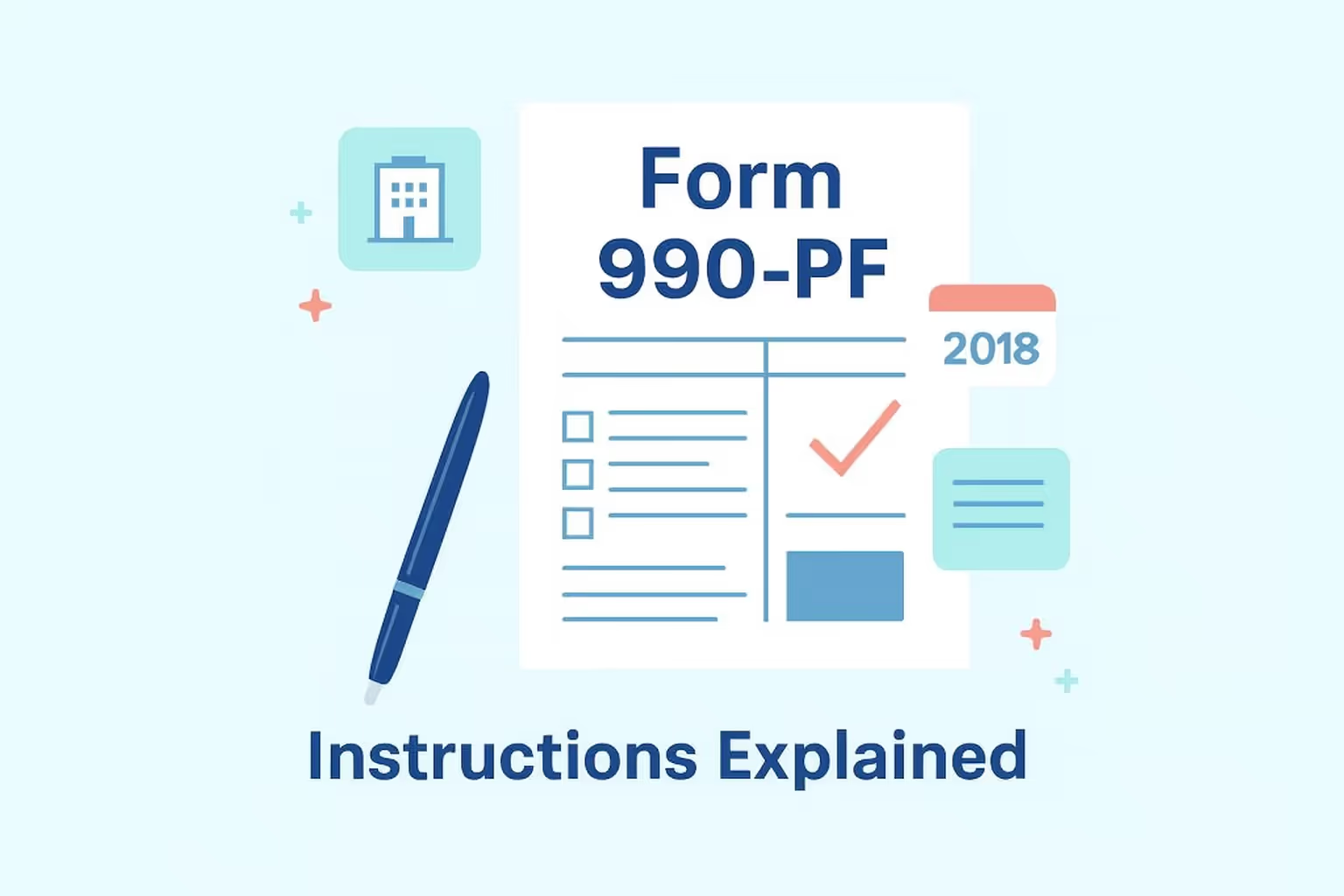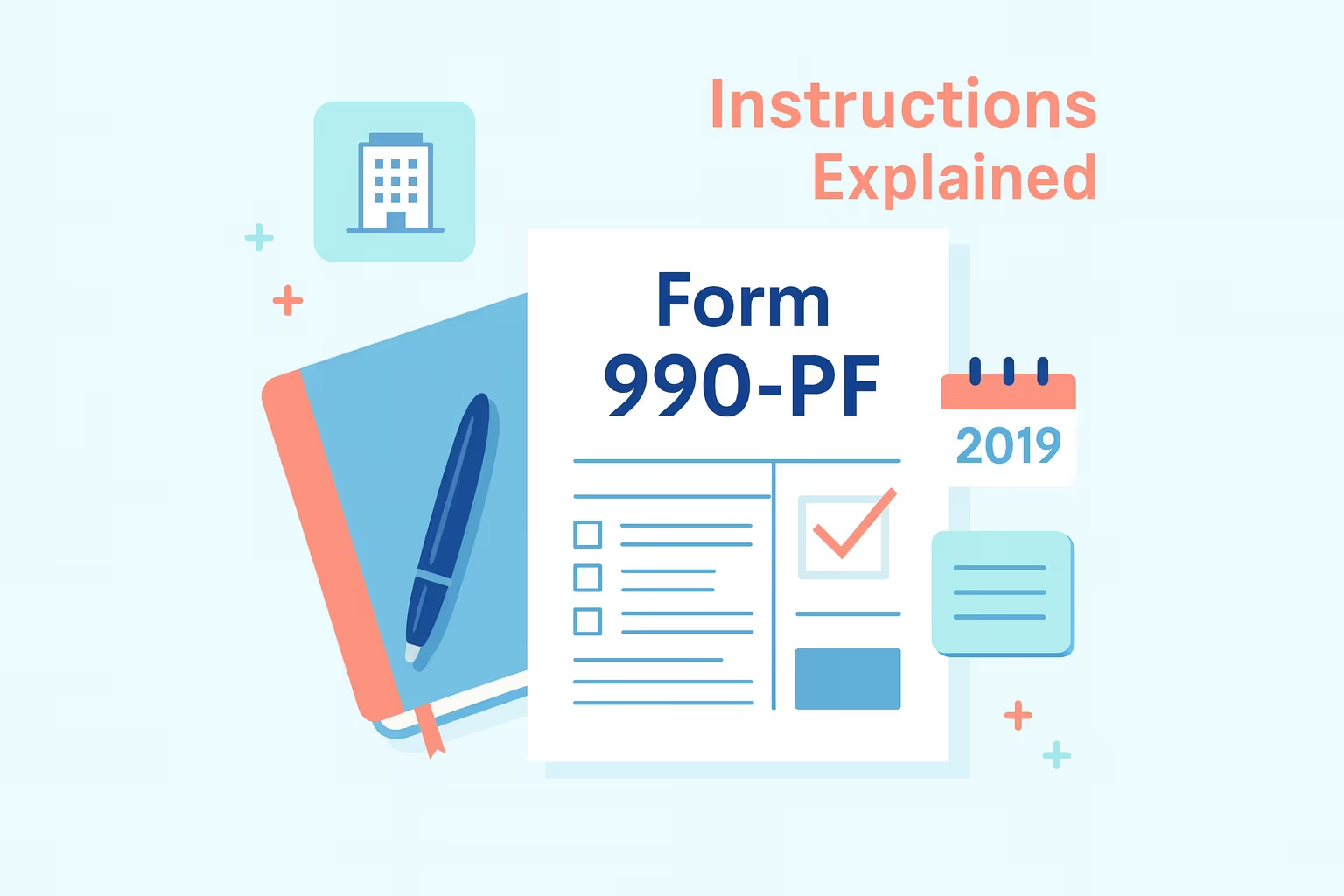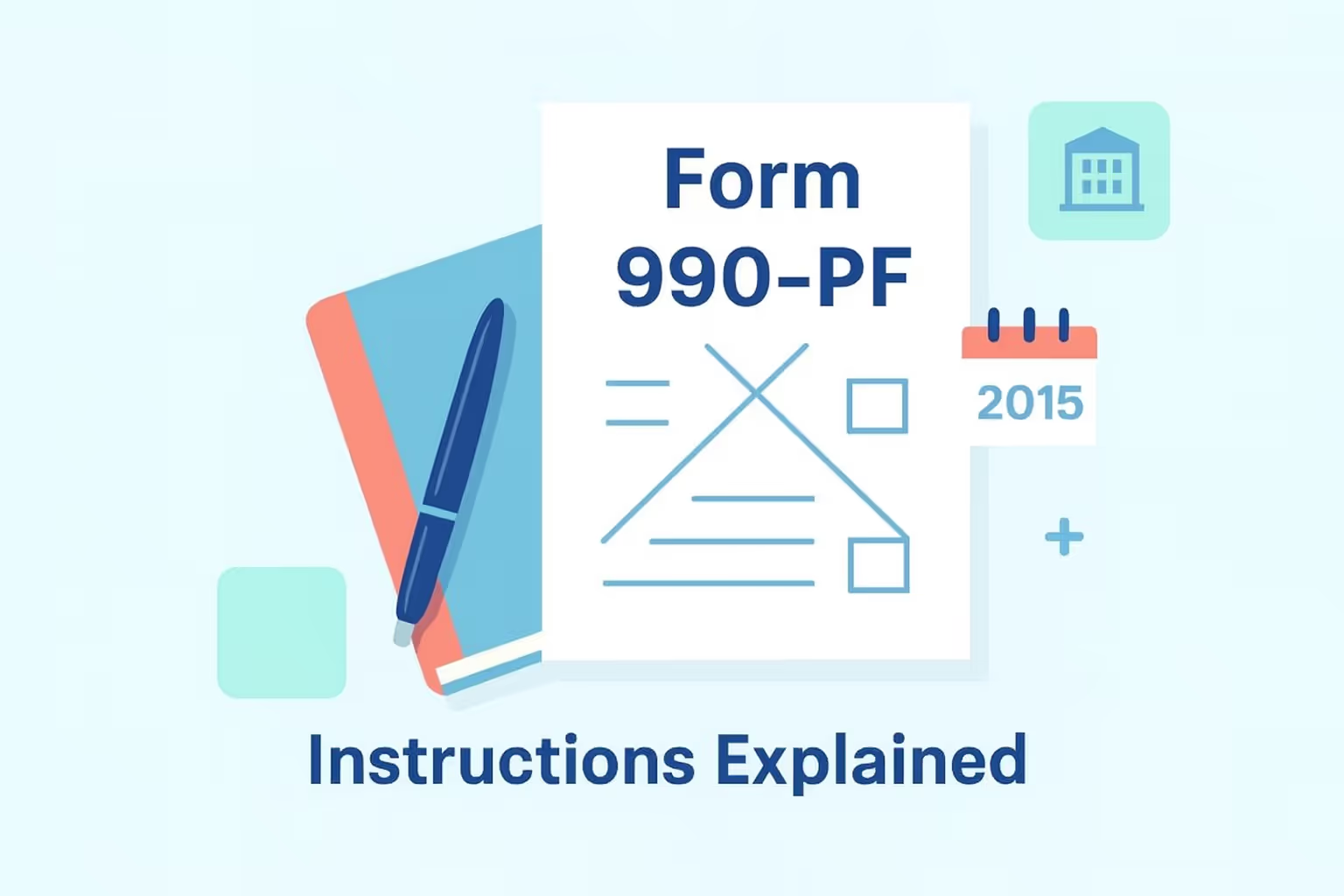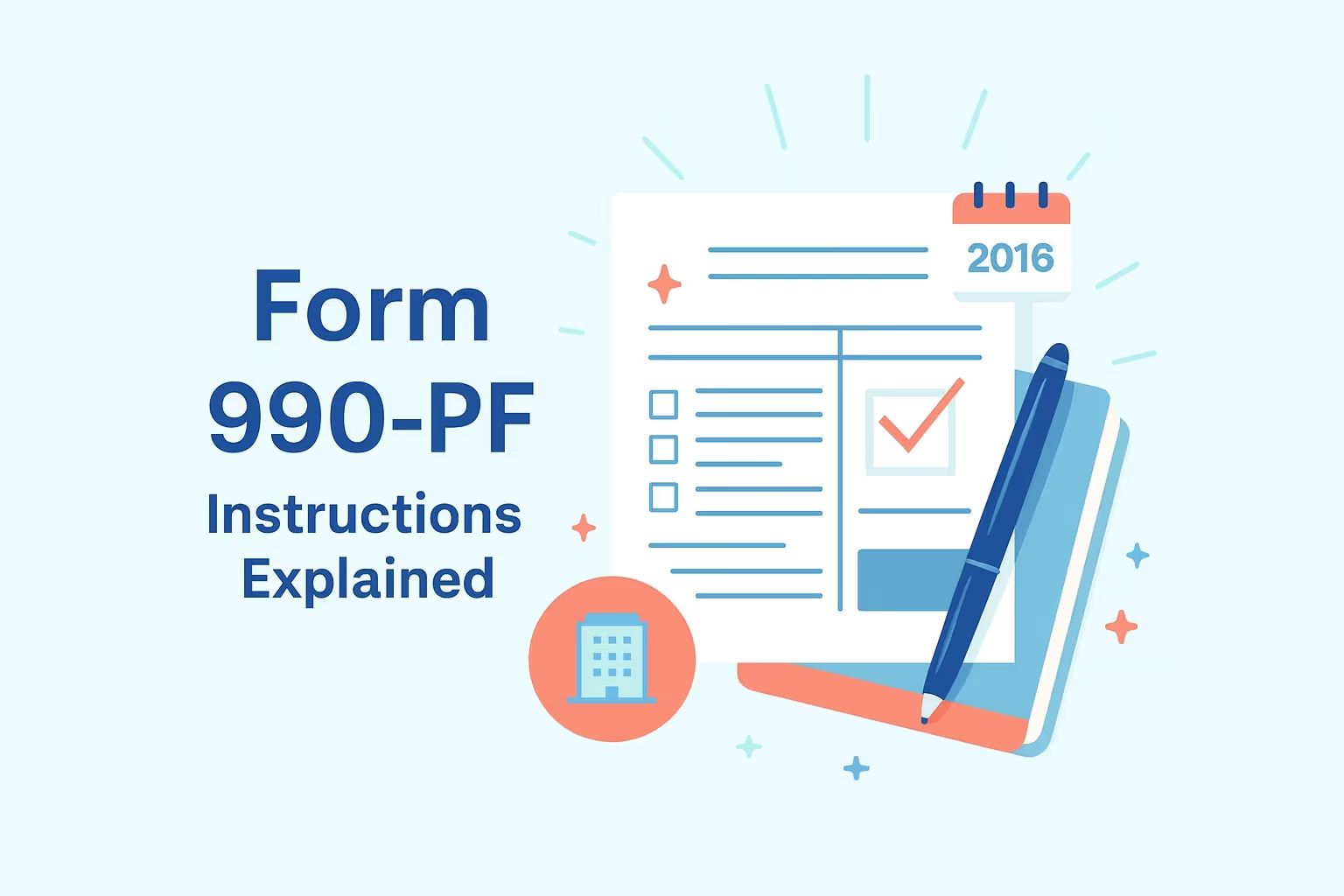
What IRS Form 990-PF (2012) Is For
IRS Form 990-PF (2012) serves as the annual information return that private foundations and certain nonprofit organizations are required to file with the Internal Revenue Service. The filing form provides an overview of a foundation’s financial health, including its fund balance, net investment income, and sources of contributions. Each report verifies compliance with federal tax exemption standards and confirms that charitable funds are managed properly.
The form’s primary purpose is to confirm that every organization’s financial support aligns with its charitable mission and that it continues to qualify for tax-exempt status. It also requires accurate disclosure of funding, grants, and donations made during the organization’s accounting period. Filing accurately promotes transparency, accountability, and continued eligibility for federal tax exemption.
Private foundations seeking form-specific guidance may consult our Form 990-PF – Return of Private Foundation Complete Guide to Filing, which outlines reporting requirements, disclosures, and compliance standards for organizations exempt under Section 501(c)(3).
When You’d Use IRS Form 990-PF (2012)
Private foundations and certain operating foundations must file IRS Form 990-PF (2012) each year to maintain their established tax-exempt status. The form must be submitted on the 15th day of the fifth month after the close of the organization’s accounting period or calendar tax year. If the due date falls on a weekend or legal holiday, the next business day becomes the filing deadline.
Organizations that cannot meet the deadline may request an automatic extension through Form 8868. Filing late without reasonable cause may result in penalties or automatic revocation of tax-exempt status. Nonprofit entities that meet specific thresholds may file the e-Postcard (Form 990-N) option, which provides a simplified electronic notice for small exempt organizations.
Timely filing helps preserve an organization’s eligibility and ensures continued access to federal benefits. Proper documentation also supports transparency and reinforces the credibility of tax preparers and nonprofits.
Key Rules or Details for 2012
The 2012 filing requirements for IRS Form 990-PF outlined specific conditions that every private foundation must meet to remain compliant. The form must be filed if the organization’s gross receipts exceeded the filing threshold or if assets reached the required reporting level during the year. Each return includes detailed information on income, distributions, and governance activities monitored by federal authorities.
Every report submitted for 2012 had to include all sections, schedules, and supporting statements. The IRS required complete and accurate financial disclosures for both domestic and foreign foundations to ensure proper accountability. Each section of the form must be filed, even if a foundation had limited activity during the accounting period.
These rules reinforced financial transparency, ensured consistent reporting practices, and supported the organization’s continued compliance with federal tax laws.
Step-by-Step (High Level)
The filing process for IRS Form 990-PF (2012) follows a structured order that every private foundation must complete carefully. Each step helps ensure accuracy in reporting income taxes, funding, and governance details required by the Internal Revenue Service. The process applies to all organizations subject to additional filing requirements based on their structure and financial size.
Step 1: Each foundation must gather financial records, including income statements, investment data, and fund balances.
Step 2: The filer must report all sources of income taxes and contributions accurately.
Step 3: Private foundations should review examples such as the Melinda Gates Foundation to identify reporting standards expected by the IRS.
Step 4: Each organization must complete the filing form using precise figures and descriptions.
Step 5: The organization should verify all sections before submission and retain copies for reference.
Filing accurately demonstrates professionalism, supports accountability, and strengthens confidence in organizational management.
Common Mistakes and How to Avoid Them
Private foundations frequently make errors when completing IRS Form 990-PF (2012). These mistakes affect compliance accuracy and may result in administrative delays. Each issue listed below includes a practical method to avoid future filing problems.
- The foundation should attach the list of contributors or state “N/A” if the section does not apply.
- The accounting team reconciles all fund balances with financial records before submitting the return.
- The filer reviews every excise tax calculation according to the official IRS instructions for accuracy.
- The organization fills in all mandatory fields and enters “None” when no data applies.
- The foundation submits the return before the filing deadline to prevent penalties and interest charges.
Avoiding these mistakes promotes accurate filing, preserves compliance, and strengthens the foundation’s financial integrity.
What Happens After You File
Once a private foundation files IRS Form 990-PF (2012), the Internal Revenue Service begins its review and verification process. The agency records the filing date, reviews financial data for accuracy, and confirms compliance with federal tax exemption standards. Each return helps demonstrate the organization’s financial responsibility and accountability.
After the IRS accepts the form, it publishes the return on its official website for public access. Every organization must keep a copy of its filing for at least three years and make it available upon request. The agency may also contact the filer to confirm figures or request supporting documentation.
This process reinforces compliance and transparency for nonprofit organizations. Accurate filings protect a foundation’s reputation, maintain eligibility for tax-exempt status, and strengthen confidence among donors, contributors, and oversight authorities.
FAQs
What is the difference between a private foundation and a public charity?
A private foundation typically receives funding from one primary source, such as an individual, family, or corporation. Public charities, in contrast, rely on support from the general public and government grants. Both are tax-exempt organizations, but their filing requirements and reporting standards differ significantly.
What happens if a nonprofit fails to file Form 990-PF?
When a nonprofit fails to file its annual return, a penalty applies for each day the return remains unfiled. Large organizations may face higher fines than small organizations. If the foundation fails to file for three consecutive years, it automatically loses its tax-exempt status.
Who must sign the filing form before submission?
The filing form must be signed by one of the foundation’s authorized directors or board members. A paid preparer who assists in completing the return must also sign the document. This verification ensures that the information submitted to the IRS is accurate and complete.
What is the due date for Form 990-PF (2012)?
The due date is the 15th day of the fifth month following the end of the accounting period. Private foundations operating on a calendar year had to file by May 15, 2013. If the due date fell on a weekend or federal holiday, the filing deadline moved to the next business day.
Where can exempt organizations access Form 990-PF and instructions?
All exempt organizations can access the official filing form and instructions through the IRS website, identified by a locked padlock icon. The website provides downloadable forms and detailed filing requirements for private foundations. It also provides instructions for accurate reporting and methods to prevent penalties.
Private foundations seeking related IRS forms, schedules, and prior-year filing resources may refer to our Federal Fillable Tax Forms directory for comprehensive federal reporting support.




























